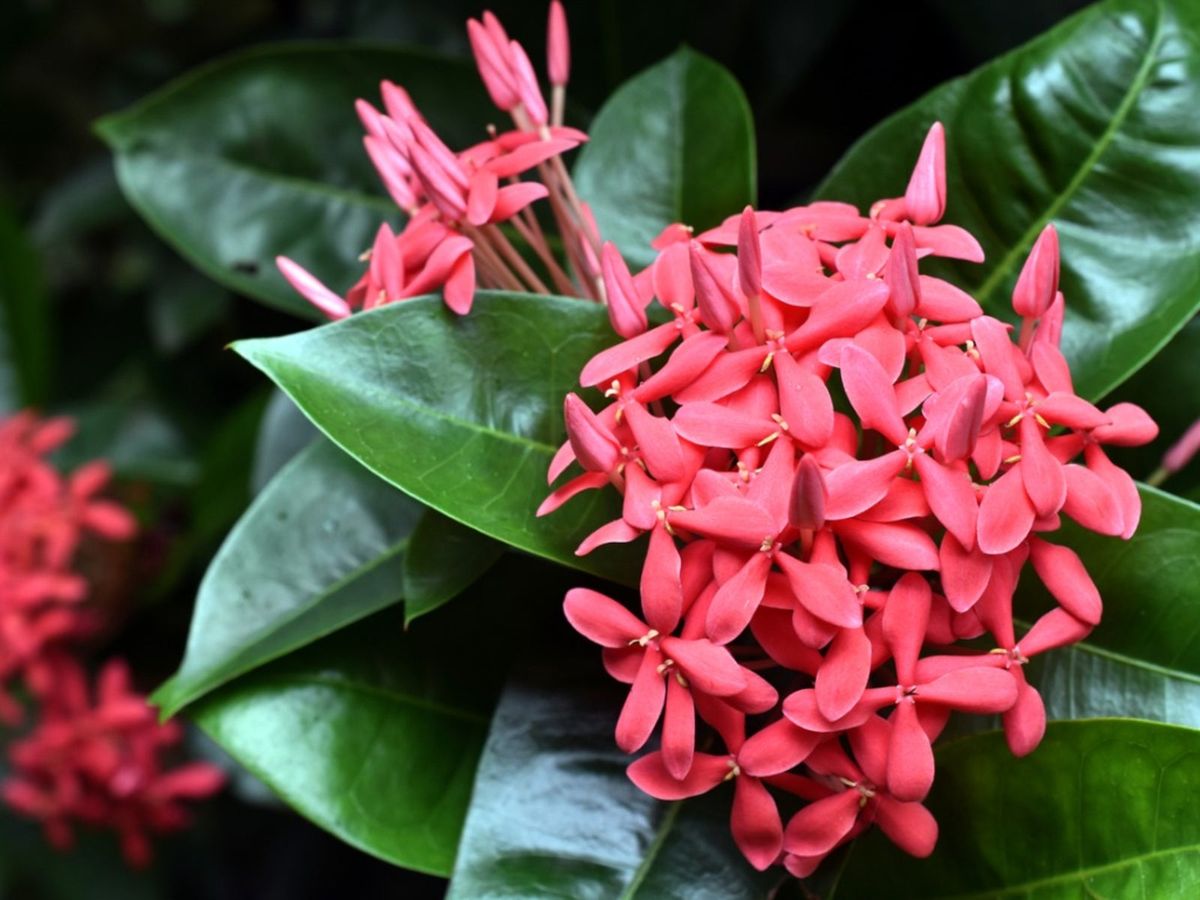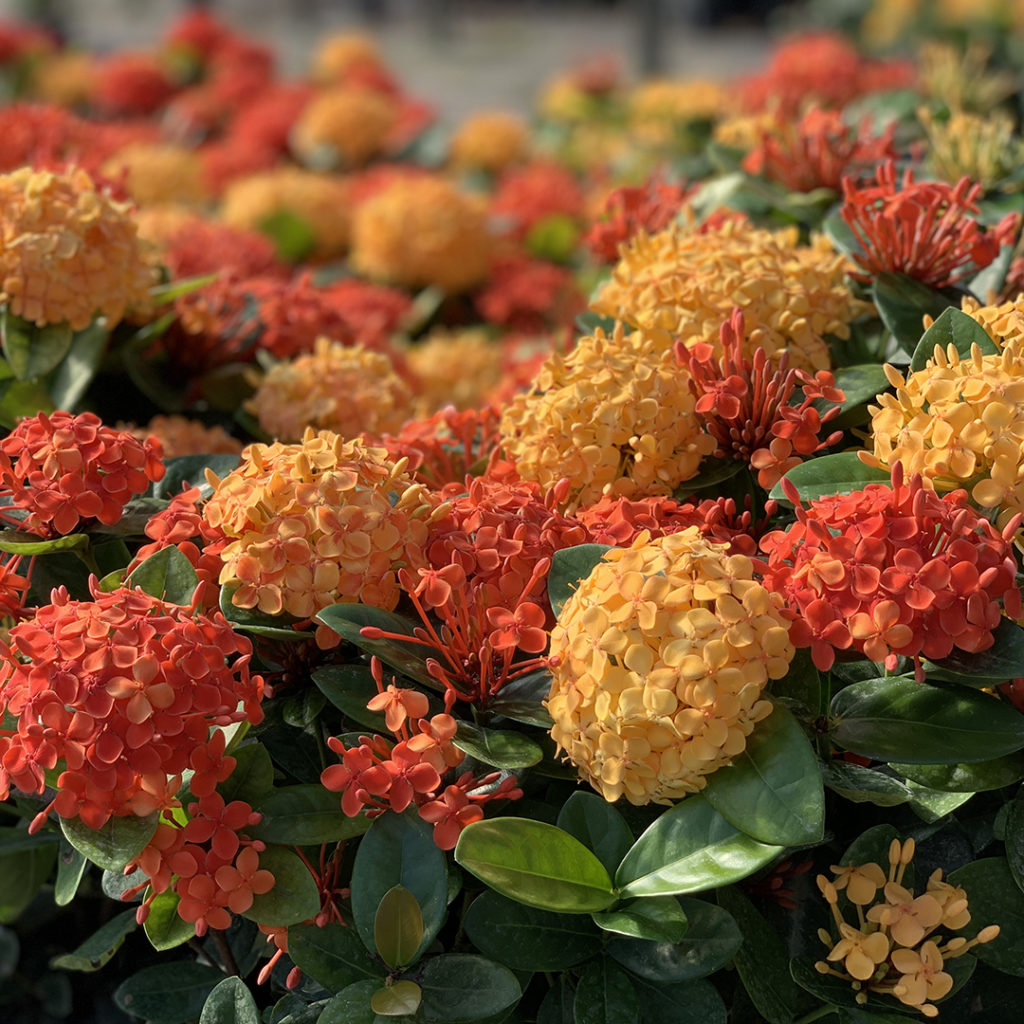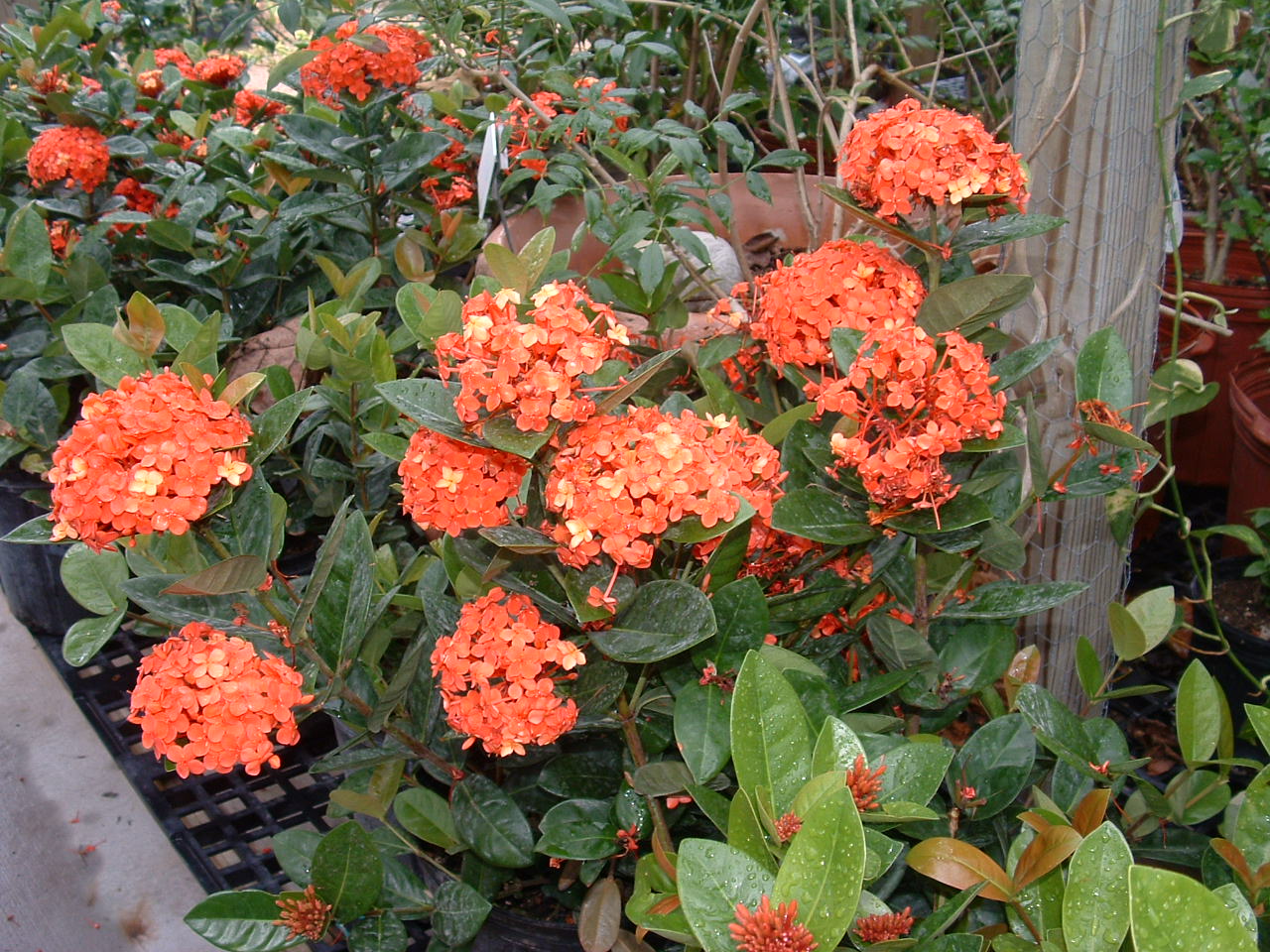The Ixora, a vibrant and captivating flowering shrub, is a beloved fixture in tropical and subtropical gardens worldwide. With its clusters of colorful blooms and lush foliage, the Ixora adds a touch of exotic beauty to any landscape. This article delves into the fascinating world of the Ixora, exploring its origins, characteristics, care requirements, and its significance in various cultures.
Origin
The Ixora genus belongs to the Rubiaceae family, which also includes coffee and gardenia. Native to tropical and subtropical regions of Asia, particularly India and Malaysia, the Ixora has spread to other warm climates due to its ornamental value.
Diversity

With over 500 species, the Ixora exhibits a remarkable diversity in size, shape, and color. Some species are small, compact shrubs, while others grow into large trees. The most striking feature of the Ixora is its inflorescence, a cluster of tiny flowers that can be red, orange, pink, yellow, or white. The color and shape of the inflorescence vary depending on the species and cultivar.
Growth Habit
Ixoras are typically evergreen shrubs with dense, bushy growth habits. They can be grown as single-stemmed plants or as multi-stemmed shrubs. The leaves are glossy, leathery, and often have a dark green color.
Flowering
The Ixora is renowned for its prolific and long-lasting blooms. The inflorescences are composed of numerous small, tubular flowers that form a dense, spherical cluster. The flowering period can vary depending on the climate and species, but many Ixoras bloom continuously throughout the year in tropical regions.
Fragrance

While some Ixora species are fragrant, others have little or no scent. The fragrance, when present, is often sweet and delicate.
Light
Ixoras thrive in full sun to partial shade. They require at least six hours of direct sunlight per day to produce abundant blooms.
Soil
Well-drained, fertile soil is ideal for Ixoras. The soil should be rich in organic matter and have a slightly acidic pH.
Watering

Ixoras prefer consistently moist soil, but they are susceptible to root rot if overwatered. Allow the top inch of soil to dry out between waterings.
Fertilizing
Regular fertilization is essential for healthy growth and abundant flowering. Apply a balanced liquid fertilizer every two weeks during the growing season.
Pruning
Pruning is necessary to maintain the shape and size of the Ixora. Prune lightly after flowering to encourage new growth and more blooms.
Pests and Diseases
Ixoras are relatively pest and disease-resistant. However, they can be affected by scale insects, mealybugs, and spider mites. These pests can be controlled with insecticidal soap or horticultural oil.

The Ixora holds significant cultural and religious importance in various parts of the world. In India, it is associated with the Hindu goddess Parvati and is often used in religious ceremonies. In Bali, Ixora flowers are used to make offerings to the gods.
The Ixora, with its vibrant blooms and versatile nature, is a captivating addition to any garden. Whether you prefer a small, compact shrub or a larger, tree-like specimen, there is an Ixora to suit your needs. By providing the right care and attention, you can enjoy the beauty of this tropical gem for years to come.

Ixora Plant
